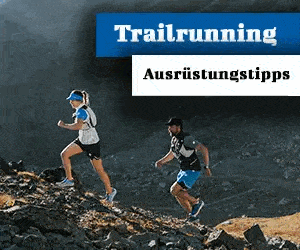The Critical Force Test is a test to determine different components of climbing-specific finger strength. With the help of the test, the short-term available maximum strength, the long-term muscular endurance and the energy storage of an athlete's forearms can be determined.
A contribution by Philip Bulling
By including these components, it allows detailed conclusions to be drawn about the athlete's training status. In addition to logging the training progress of individual athletes, it can also be used to compare the performance of different athletes.
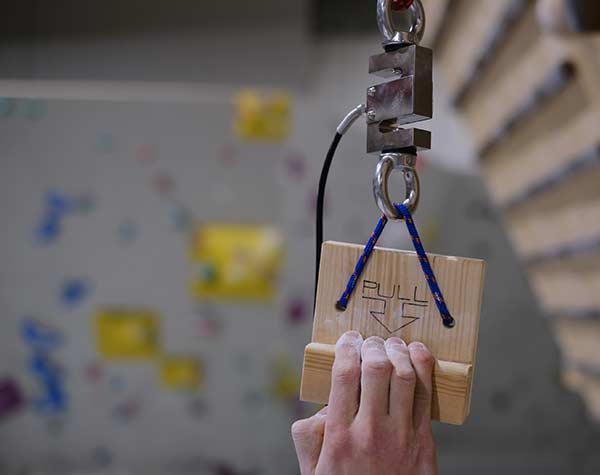
Critical power in climbing
While the concept of critical power has long been an established tool for training optimization in endurance sports such as running or cycling, comparable concepts in climbing sports have only recently emerged.
The equivalent of critical power in climbing is the so-called critical force. This is the strength that an athlete can sustain for a long period of time without sacrificing performance.
In the area of the critical force, the energy that the muscle consumes during exertion can be directly reproduced and made available by the body to the same extent.
The topic was significantly advanced by the research group led by David Giles (Lattice Training Ltd.) with two publications from 2019 and 2020 (Giles et al. 2019, Giles et al. 2020). These two publications each describe a method for determining the critical force, which is explained below.
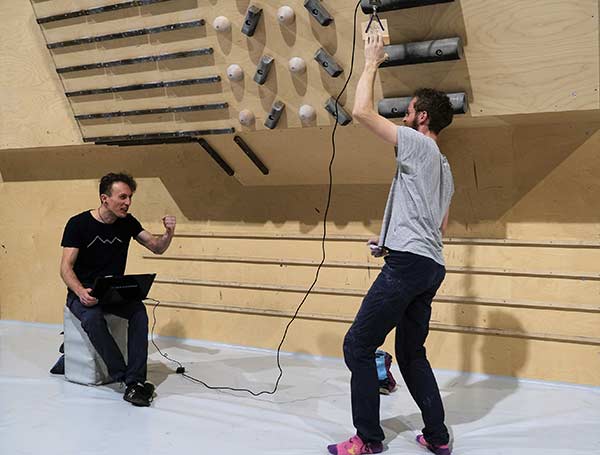
Two-arm critical force test with additional weight/relief
A first method for determining the critical force is given in Giles et al. described in 2019. It comprises four individual tests, which the athlete ideally completes on different days, each with a break beforehand.
First, the athlete determines the maximum weight that he can hold with both arms on a 7mm bar for 20s. The load is gradually increased with additional weights, whereby the maximum load should be reached within six to eight repetitions. The break between each repetition is 2 minutes. The maximum strength is calculated from body weight plus additional weight and serves as the starting point for the following endurance tests.
«It is important to ensure that all the tests described here are carried out with the fingers half raised (Half Crimp) be performed ."
Phillip Bulling
In the second step, the athlete hangs on the bar for 7s, followed by a 3s pause ("7:3 repeaters"). This is repeated at three different loads until failure. The loads correspond to 80%, 60% and 45% of the maximum force determined at the beginning. If the resulting load is less than the body weight, the load is relieved using a pulley system.
If you plot the respective loads (80%, 60%, 45%) over the time until failure (t80%, t60%, t45%), you get the curve shown below.
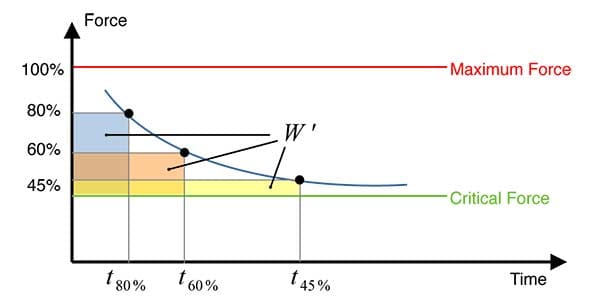
Determination of the critical force and the energy store W' from three measurements (7:3 repeaters at 80%, 60% and 45% of the maximum force). Graphic: Philip Bulling
It can be seen that a compensating curve drawn through the three measurement points (blue) approaches a constant value (green) asymptotically. This constant value corresponds to the critical force.
"The critical force describes the force that the athlete can theoretically maintain indefinitely."
Phillip Bulling
If the load exceeds the critical force, the additional energy required for this is drawn from the energy store W'. The higher the load, the faster the energy store is exhausted. After the energy store has been used up, the athlete can only sustain a load equal to the critical force.
To calculate the size of the energy store W', the critical force is subtracted from the respective load and then multiplied by the associated time until failure. With consistent test conditions, the calculated energy store W' should be about the same for all three loads.
The advantage of this test is the low cost of materials. In addition to a 20mm bar, only additional weights and, if necessary, a pulley are required. The disadvantage is that it takes a lot of time. Since testing is carried out on different days, it must be ensured that the athlete is in the same, rested form on all test days in order to obtain a valid result. For this reason, a method is presented below in which the relevant variables can be determined with a single test.
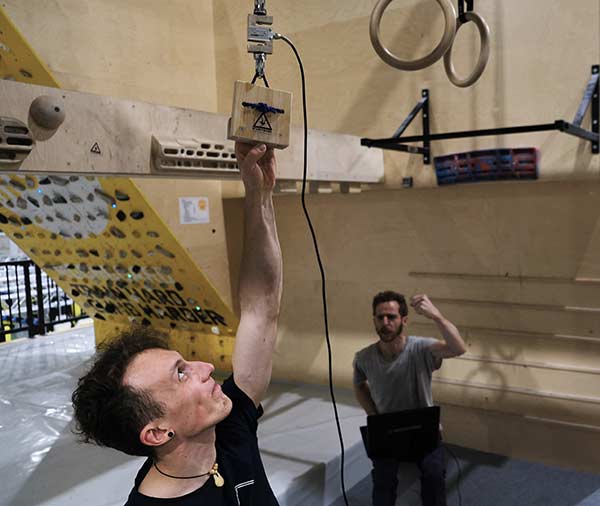
One-arm critical force test with load cell
As described above, the critical force is the force that can still be applied when the energy stores W' of the muscle group being used are completely empty. This condition is compared with the one described in Giles et al. 2020 brought about in a single test.
For this purpose, the athlete brings the maximum possible force over a period of 4 minutes for 7 seconds each with one arm on a 20 mm bar, followed by a 3 second break. Again, the fingers are half set up. The force is measured using a load cell connected to the bar. If the athlete is able to hold more than their own body weight, weight must be added until they can no longer lift off the ground.
It turns out that the force measured with the load cell decreases with each repetition. After 3 minutes at the latest, most athletes have a constant force. This means that at this point the energy stores are empty and from the third minute the athlete can only muster his critical force.
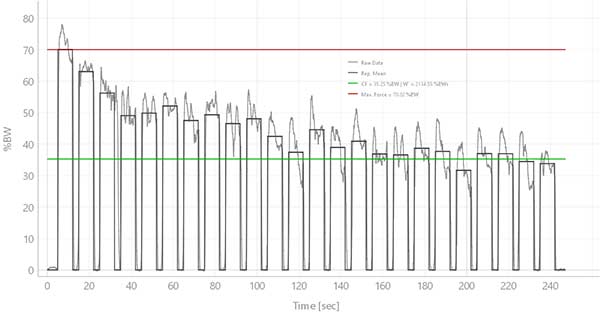
The light gray gradient in the diagram shows the raw data of the load cell. The dark gray course corresponds to the mean value over 7s of the respective repetition. The athlete shown in the diagram exerts a force of about 70% of his body weight during the first rep. With each repetition, the strength decreases until a critical force of about 35% of body weight is reached.
The critical force is determined from the average force of the last six repetitions. In this case, too, the size of the energy store W' can be determined from the diagram. Here it corresponds to the area between the force curve and the critical force (horizontal green line).
Build your own test setup
The advantages of the one-arm critical force test with load cell are obvious. After a test duration of only four minutes (plus a thorough warm-up), numerous meaningful parameters for the athlete's maximum strength and endurance are available. Unfortunately, no suitable measuring equipment is commercially available at the moment.
A "Digital Testing Rung" was set up by Lattice Ltd. although 2019 announced, but is not yet available. There is also a load cell for climbers from Tindeq, however, the associated smartphone app does not currently offer the possibility of directly calculating the critical force and the energy storage W'.
With the help of a free-hanging 20mm bar and a standard load cell, you can set up the corresponding hardware yourself with little effort. Appropriate load cells and the required amplifiers and analog/digital converters can be obtained for mid double-digit euro amounts. We will show you exactly how this works in the next article.
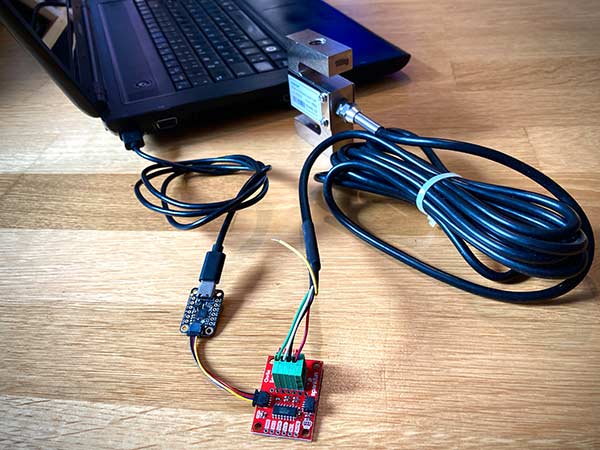
Conclusion
With the two test methods presented, the maximum force, the energy storage W' and the critical force of an athlete can be determined. Irrespective of which of the two Critical Force Tests is used, the test results can provide informative insights into their training status or deficits for both professional athletes and ambitious amateurs. In this way, the training can be geared very specifically to the goals or weaknesses of the athlete.
About the author
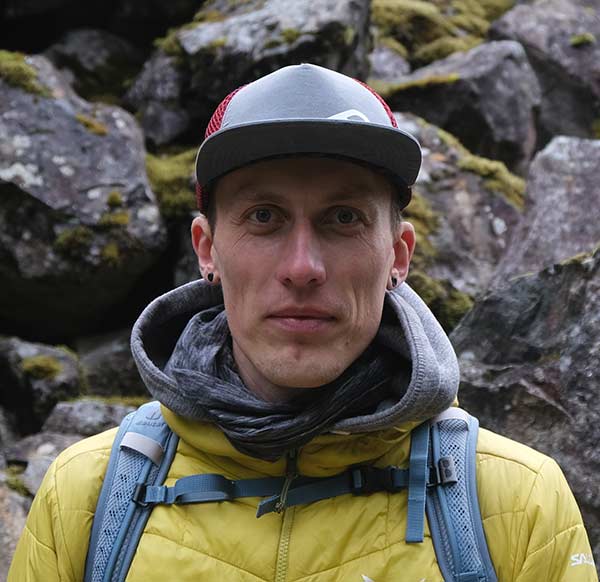
Philipp Bulling has a doctorate in digital signal processing and has over 10 years of experience in this field.
In his spare time he is a passionate climber and constantly tries to optimize his training methods.
With the Critical Force Software project, he brings his profession and his passion into line.
Sources
- Giles D, Chidley J, Taylor N, et al. The determination of finger flexor critical force in rock climbers. Int J Sports Physiol Perform. 2019; 14(7):972-979.
- Giles, D., Hartley, C., Maslen, et al. An all-out test to determine finger flexor critical force in rock climbers. international J.Sports Physiol. perform 2020; 16(7):942-949.
That might interest you
- You should avoid these 3 mistakes in fingerboard training
- Blood Flow Restriction Training: Getting stronger despite injury and a break from climbing?
Do you like our climbing magazine? When we launched LACRUX, we decided not to introduce a payment barrier. It will stay that way, because we want to provide as many like-minded people with news from the climbing scene.
In order to be more independent of advertising revenue in the future and to provide you with even more and better content, we need your support.
Therefore: Help and support our magazine with a small contribution. Naturally you benefit multiple times. How? You will find out here.
+ + +
Credits: Cover photo Philipp Bulling


